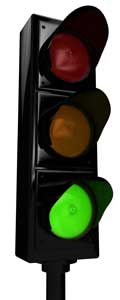 |
|||||
|
|
Summer 2012 Overcoming Outdoor Barriers for Health and Well Being Do You Have an Asthma Action Plan? Northern California’s Answer to Asthma AsthmaKaDaBra: New Book Educates Kids and Parents about Asthma Maine Medical Center Offers Asthma Self-Management Education Tell Us What You Think About Allergy & Asthma Health
|
|
|
Do You Have an Asthma Action Plan?by Mike Shoemaker, BHA, RRT-NPS, AE-C
Do you control your asthma, or does it control you? Is it time to take action? If you struggle with ongoing asthma symptoms, or feel limited by your asthma, following an asthma action plan can help you regain control over your asthma. If your asthma is well controlled and you do not have worrisome symptoms, you probably already have a good asthma action plan. An asthma action plan helps you know when your asthma is well controlled, and helps you know exactly what steps to take when it is not. Because asthma is different for each person, there is not a "one-size-fits-all" asthma action plan. Ask your health care provider, including your doctor and your respiratory therapist, to help you create an individualized action plan. The plan should answer questions such as:
Asthma action plans come in a variety of formats; the most common plans are color-coded and are set up like a traffic light. Green is the "go" zone. This section tells you what to do when things are going well and you are having no symptoms. The green zone is very important to help you keep your asthma under control. Typical "green zone" information includes your daily controller medications and tips on things to avoid. Yellow is the "caution" zone. This section tells you how to react when you first begin having signs or symptoms of an asthma flare-up. Red is the "stop" zone. This section helps you know when you need to seek immediate help. Asthma action plans may be based on your peak flow meter readings, your symptoms, or a combination of the two. Work with your health care provider to set up the plan that works best for you. Remember that peak flow-based plans are most helpful if you use your peak flow meter daily. Many people can successfully manage their asthma without a peak flow meter by learning their own early warning signs and treating those signs according to their asthma action plan. If your doctor has yet to provide you with an asthma action plan, check out this action plan the National Heart, Lung and Blood Institute (NHLBI) website, and then take a copy of it with you when you make your next office visit and ask your doctor to customize it for your particular case. The NHLBI also offers a handy wallet card that you might find useful in keeping your asthma under good control. Mike Shoemaker is a member of the American Association for Respiratory Care from Anderson, SC, where he serves as manager of respiratory care services at AnMed Health Women's and Children's Hospital and site coordinator for the ASME Certified Asthmania Academy. |
|

